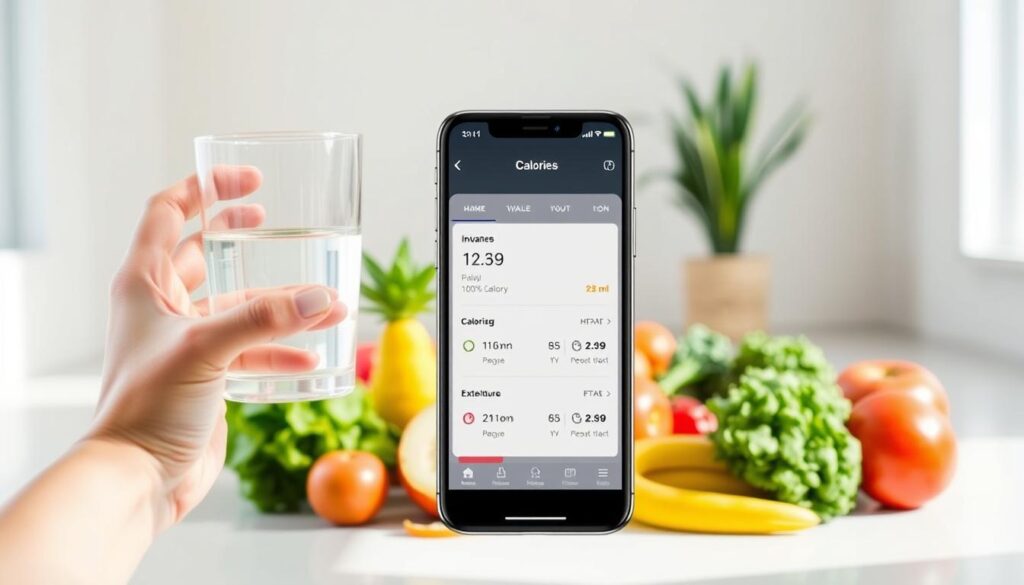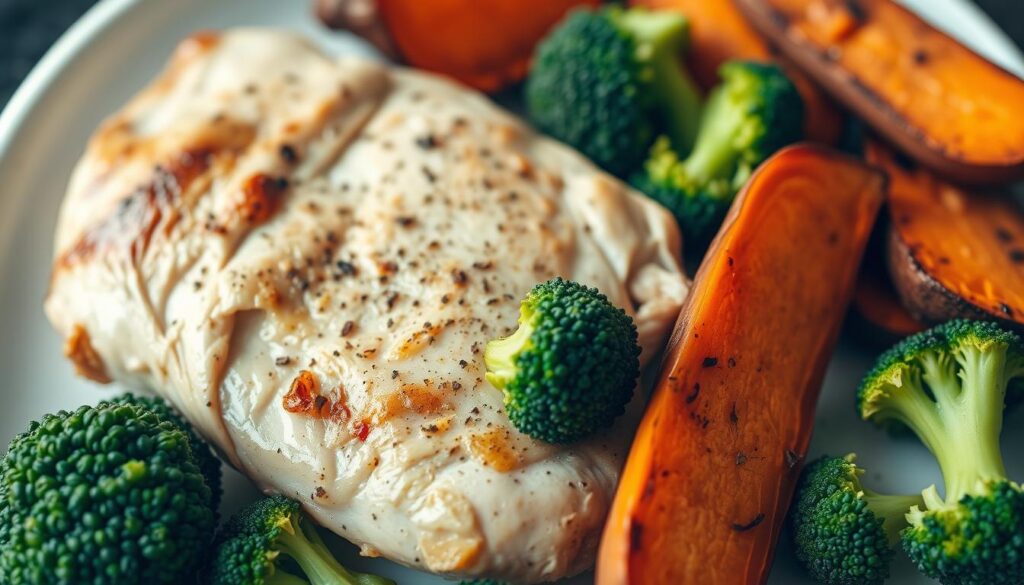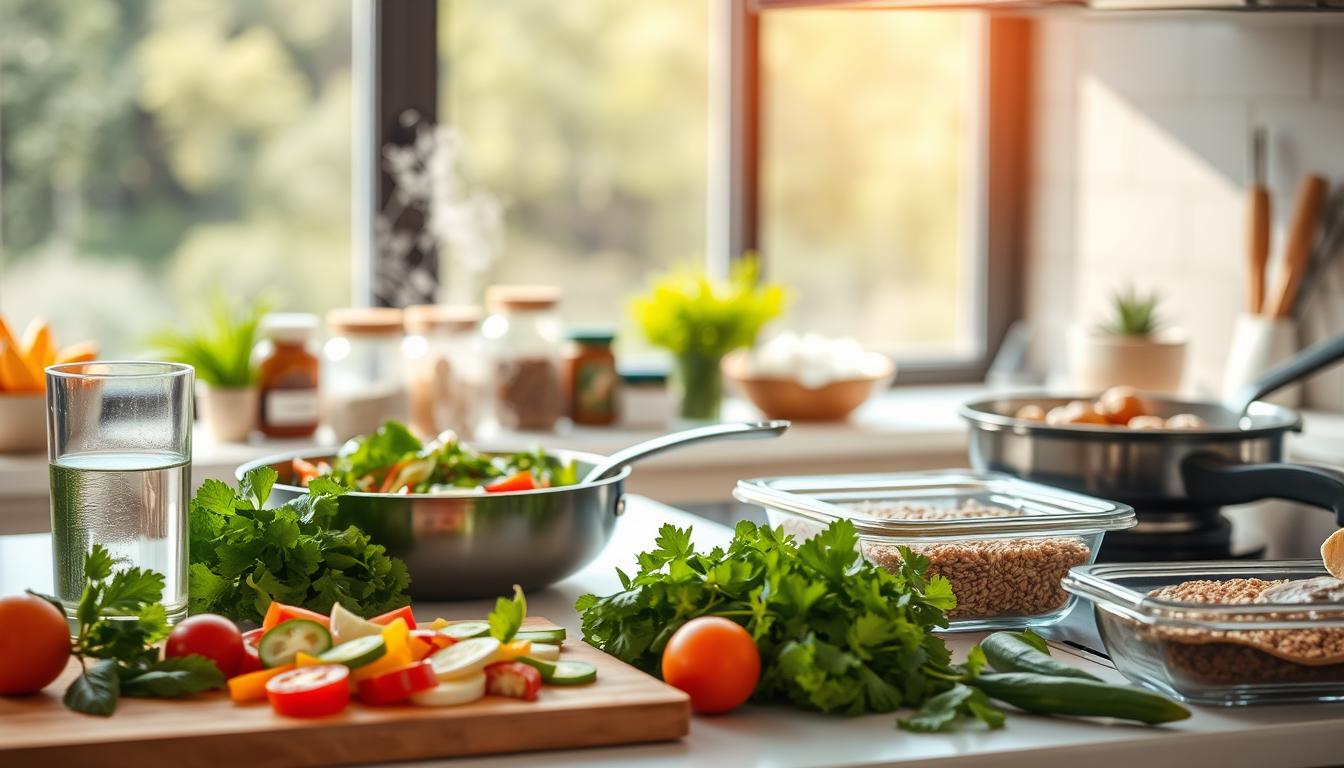Are you ready to transform your body in just two weeks? Losing weight can feel overwhelming, but with the right approach, it doesn’t have to be. This 14-day diet plan is designed to help you shed up to 20 pounds safely and effectively. By focusing on clean eating, staying hydrated, and incorporating exercise, you can achieve your weight loss goals without sacrificing your health.
This plan is perfect for those seeking rapid results but want to avoid extreme or unhealthy measures. It’s all about making sustainable lifestyle changes that promote weight loss while keeping you energized and focused. With expert-backed advice and evidence-based strategies, you’ll be guided every step of the way.
Imagine starting your day with a nutritious breakfast, followed by wholesome meals and snacks that keep your metabolism boosted. By combining balanced nutrition with regular physical activity, you can create a routine that supports your body’s natural weight loss processes. It’s time to embrace a healthier lifestyle and see the results you’ve been waiting for.
Key Takeaways
- A 14-day plan focused on clean eating and hydration for safe weight loss.
- Incorporate regular exercise to boost metabolism and burn fat.
- Expert advice and evidence-based strategies for sustainable results.
- Healthy meal plans and snacks to keep energy levels high.
- Realistic expectations for weight loss while maintaining overall health.
Overview of the 14 day diet plan to lose 20 pounds
Discover how this structured program can help you achieve your weight loss goals safely and effectively. The plan is designed to guide you through a two-week journey with clear, actionable steps.
What to Expect from the Plan
Each day is broken down into manageable segments, focusing on balanced nutrition, portion control, and regular hydration. The program emphasizes whole foods like lean proteins, vegetables, and fruits, while minimizing processed foods and added sugars.
Understanding the How-To Approach
| Component | Details |
|---|---|
| Calorie Intake | Averages 1,200–1,288 calories per day |
| Protein | 35–72 grams daily |
| Carbohydrates | 102–174 grams daily |
| Fat | 41–71 grams daily |
| Fiber | 26–61 grams daily |
By following this plan, you can expect to lose 3–4 pounds over the two-week period. The program is backed by scientific research and clinical advice, ensuring a safe and sustainable approach to weight loss.
Health Benefits and Key Principles of the Diet Plan
Adopting a structured approach to weight loss can have numerous health benefits. By focusing on clean eating and balanced nutrition, you can improve your overall well-being while working towards your goals.
Rapid Weight Loss Goals and Realistic Outcomes
A well-designed plan can help you shed excess weight safely. While rapid weight loss is possible, it’s important to set realistic expectations. Aim to lose 3–4 pounds per week for sustainable results. This approach ensures you’re not just losing water weight but making meaningful changes to your body composition.

Remember, the key is to create a calorie deficit while maintaining proper nutrition. This balance helps preserve muscle mass and keeps your metabolism active.
Evidence-Based Tips from Trusted Sources
Studies from trusted sources like PubMed Central and Cleveland Clinic highlight the benefits of certain practices. Drinking water and cutting out processed foods can boost your metabolism and support weight loss. These evidence-based tips are designed to help you stay on track and achieve your goals.
By aligning your daily habits with these principles, you can create a sustainable routine that promotes long-term success. Focus on whole foods, stay hydrated, and incorporate regular physical activity to maximize your results.
Getting Started with Clean Eating and Meal Planning
Clean eating is a simple yet powerful approach to nutrition that focuses on whole, minimally processed foods. It’s about making intentional choices to fuel your body with nutrient-dense ingredients while avoiding unhealthy additives. This method isn’t just about weight loss; it’s a sustainable way to improve your overall health and energy levels.

Essential Foods to Include
- Leafy Greens: Spinach, kale, and broccoli are rich in vitamins and fiber.
- Lean Proteins: Choose chicken, turkey, or fish for muscle maintenance and satiety.
- Fresh Fruits: Opt for apples, oranges, and berries for natural sweetness and antioxidants.
- Whole Grains: Incorporate brown rice, quinoa, or oats for sustained energy.
Foods to Avoid for Maximum Results
- Processed Foods: Limit items like packaged snacks and frozen meals.
- Sugary Drinks: Avoid sodas and juices high in added sugars.
- Refined Carbs: Reduce intake of white bread, pasta, and pastries.
| Food Category | Benefits |
|---|---|
| Vegetables | High in fiber and essential vitamins for digestion and energy. |
| Proteins | Support muscle growth and keep you full longer. |
| Fruits | Provide natural sugars and antioxidants for overall health. |
| Healthy Fats | Essential for brain function and hormone balance. |
By focusing on these foods, you can create meals that not only support your weight loss goals but also enhance your overall well-being. Clean eating is a lifestyle change that promotes long-term health benefits beyond just shedding pounds.
Understanding Calorie Budgeting and Hydration
Calorie budgeting is a crucial strategy for anyone aiming to shed weight effectively. It involves tracking your daily calorie intake to ensure you’re creating a deficit that promotes fat loss without depriving your body of essential nutrients. By balancing your calorie consumption with your body’s needs, you can support your metabolism and maintain energy levels throughout the day.
Strategies for Effective Calorie Management
Managing your calorie intake doesn’t have to be complicated. Start by setting a daily calorie goal based on your weight loss objectives. For most people, a deficit of 500 calories per day is a safe and sustainable target. You can track your intake using a food diary or a mobile app, making sure to account for every meal and snack.
| Component | Recommended Daily Intake |
|---|---|
| Calories | 1,200–1,500 calories |
| Protein | 35–72 grams |
| Carbohydrates | 102–174 grams |
| Fat | 41–71 grams |
Pairing a balanced diet with regular physical activity helps burn more calories than consumed, supporting your weight loss journey. For example, a 30-minute brisk walk can burn around 150 calories, complementing your dietary efforts.
The Role of Water in Boosting Metabolism
Staying hydrated is another key factor in effective weight loss. Water not only helps control hunger but also boosts your metabolism, aiding in calorie burning. Research shows that drinking water can increase your resting energy expenditure, helping your body burn more calories at rest.

Aim to drink at least 8-10 glasses of water daily, spreading it out throughout the day. Consider setting reminders to drink water at specific times, such as when you wake up or before meals. Additionally, incorporating water-rich foods like cucumbers and oranges can contribute to your hydration goals.
By combining smart calorie budgeting with consistent hydration, you can create a powerful strategy that supports your weight loss efforts. Remember, small, sustainable changes lead to long-term success.
Eliminating Unhealthy Foods: Junk Food and White Carbs
Understanding the impact of unhealthy foods is crucial for any weight loss journey. Junk food and white carbs can hinder your progress, making it harder to achieve your goals.
Identifying and Cutting Out Processed Foods
Processed foods are often high in unhealthy ingredients like added sugars, salt, and harmful fats. These foods can lead to rapid weight gain and make it difficult to maintain a calorie deficit. To identify processed foods, check the ingredient list for items like high-fructose corn syrup, artificial flavors, and hydrogenated oils.
Start by eliminating these items from your daily meals. Replace them with whole, nutrient-dense foods like vegetables, lean proteins, and whole grains. This simple change can significantly improve your weight loss efforts and overall health.
The Impact of White Carbs on Weight Gain
White carbs, such as white rice and bread, can cause insulin spikes, leading to fat storage and insulin resistance. These foods are quickly digested, causing a rapid increase in blood sugar levels. Over time, this can contribute to weight gain and metabolic issues.
Expert recommendations suggest focusing on low-carb alternatives like cauliflower rice or whole-grain bread. These options provide sustained energy and help maintain a healthy metabolism. By making these substitutions, you can reduce insulin spikes and support your weight loss goals.
Removing junk food and white carbs from your diet creates a more efficient weight loss process. It helps reduce cravings and stabilizes blood sugar levels, making it easier to stick to your weight loss plan. With these changes, you can achieve a healthier lifestyle and reach your goals faster.
Incorporating Lean Proteins and Nutrient-Rich Vegetables
Lean proteins and nutrient-rich vegetables are essential for a balanced weight loss meal plan. They provide the necessary nutrients while keeping you full and energized throughout the day.
The Benefits of Lean Proteins like Chicken and Fish
Lean proteins such as chicken and fish are vital for maintaining muscle mass and promoting satiety. They are low in fat and high in protein, making them an excellent choice for weight loss. Protein helps you feel fuller longer, reducing the temptation to snack between meals.
| Food | Calories | Protein (g) |
|---|---|---|
| Grilled Chicken Breast | 165 | 31 |
| Baked Salmon | 180 | 20 |
| Turkey Breast | 140 | 30 |
Vegetables That Fuel Your Weight Loss Journey
Vegetables are packed with nutrients, fiber, and antioxidants that support weight loss. Leafy greens like spinach and broccoli are particularly beneficial, as they are low in calories and high in fiber, making them very filling.

“A diet rich in lean proteins and vegetables can significantly enhance weight loss efforts by improving metabolism and reducing hunger.” – American Heart Association
Incorporating these foods into your meals not only supports your weight loss goals but also promotes overall health and well-being. By focusing on whole, nutrient-dense foods, you can create a sustainable and effective weight loss plan.
Effective Meal Prep Strategies for Rapid Weight Loss
Meal preparation is the backbone of any successful weight loss journey. By organizing your meals in advance, you can avoid last-minute, unhealthy choices and stay committed to your calorie budget. A well-planned menu ensures you meet your nutritional goals while keeping things interesting and delicious.
Planning Your Menu
A 14-day menu plan is essential for maintaining balanced nutrition. Start by listing your breakfast, lunch, and dinner options for each day, ensuring a mix of lean proteins, vegetables, and whole grains. Consider your schedule and preferences to make the plan realistic and enjoyable. For example, include quick meals for busy days and hearty dishes for weekends.
| Meal Prep Strategy | Benefits |
|---|---|
| Batch Cooking | Saves time and ensures consistent meals throughout the week. |
| Portion Control | Helps maintain calorie intake and prevents overeating. |
| Efficient Storage | Keeps meals fresh and readily available, reducing food waste. |
Tips for Efficient Food Preparation
Prep your meals in advance to save time and reduce stress. Start by cooking large batches of staples like brown rice or quinoa, then portion them out for the week. Chop vegetables and marinate proteins ahead of time to make meal assembly quick and easy. Use airtight containers to store prepped meals, ensuring they stay fresh and convenient.
Consider using apps or printable meal planners to organize your recipes and shopping lists. These tools help you stay on track and ensure you don’t miss any essential items. By combining smart planning with efficient prep, you can maintain a balanced diet that supports your weight loss goals.
Smart Snacking and Portion Control for Sustained Energy
Snacking can be a helpful tool in your weight loss journey when done mindfully. Choosing the right snacks and controlling portion sizes helps maintain energy levels without derailing your progress. By making smart choices, you can stay on track and feel satisfied throughout the day.
Choosing Healthy Snacks
Healthy snacks are essential for keeping your energy up. Look for options that combine protein, fiber, and healthy fats. These nutrients help you feel full longer and prevent sudden hunger spikes.
- Fresh fruits like apples or oranges
- Raw nuts such as almonds or walnuts
- Hard-boiled eggs for a quick protein boost
- Carrot sticks with hummus
These snacks are not only nutritious but also easy to prepare and take on the go.
Portion Control Techniques to Avoid Overeating
| Snack | Calories | Protein (g) |
|---|---|---|
| 1 small apple | 95 | 0.3 |
| 1 oz almonds | 161 | 6 |
| 2 hard-boiled eggs | 140 | 12 |
Using smaller plates and measuring portions can help control intake. Pre-measuring snacks ensures you stick to your calorie goals.
Mindful eating is key. Pay attention to hunger cues and eat slowly to avoid overeating. Staying hydrated also helps reduce unnecessary snacking.
“Smart snacking and portion control are powerful tools for weight loss. They help maintain energy and prevent overeating.” – CDC
Incorporate these strategies into your daily routine to support your weight loss goals and overall health.
Integrating Exercise and Daily Activity for Weight Loss
Regular physical activity is a cornerstone of any successful weight loss journey. It helps create a calorie deficit while improving overall health. Whether you prefer moderate or vigorous exercises, movement plays a vital role in achieving and maintaining your goals.
Understanding Exercise Intensity
Both moderate and vigorous exercises offer unique benefits. Brisk walking or cycling are excellent moderate options, while running or high-intensity interval training (HIIT) fall into the vigorous category. For example, a 30-minute brisk walk burns around 150 calories, while running can burn approximately 300 calories in the same time. The key is to choose activities you enjoy and can stick with consistently.
Everyday Habits to Enhance Calorie Burn
Incorporating simple daily habits can make a big difference. Taking the stairs instead of the elevator, stretching during TV breaks, or parking further away are easy ways to increase activity levels. These small efforts add up over time and contribute to your overall calorie deficit.
- Taking the stairs instead of the elevator
- Stretching during TV breaks
- Parking further away from your destination
“Regular physical activity complements dietary changes, supporting sustained weight loss and overall health.” – CDC
By combining exercise with a balanced diet, you create a powerful strategy for weight loss. Aim for at least 30 minutes of moderate exercise most days of the week, and consider adding strength training to build muscle and boost metabolism. Remember, consistency is key to achieving and maintaining your weight loss goals.
Lifestyle Adjustments: Sleep, Habits, and Consistency
While diet and exercise are crucial for weight loss, lifestyle adjustments like sleep and daily habits significantly impact your journey. These factors help regulate hormones, control hunger, and support long-term success.
Improving Sleep Quality for Better Results
Sleep plays a vital role in weight loss by affecting metabolism and hunger hormones. Poor sleep can lead to increased appetite and slower metabolism, hindering your progress.
- Establish a consistent bedtime routine to improve sleep quality.
- Reduce screen time before bed to promote better rest.
- Create a relaxing environment, such as keeping the bedroom cool and dark.
Building Sustainable Healthy Habits
Consistency is key to maintaining healthy habits. Regular sleep, exercise, and balanced eating support weight loss and overall health.
- Set realistic goals and track your progress to stay motivated.
- Incorporate small, gradual changes into your daily routine for lasting results.
- Focus on sustainable practices beyond any specific plan to ensure long-term success.
“Consistent sleep and healthy habits are essential for weight loss and overall well-being.” – Johns Hopkins Medicine
By prioritizing sleep and building sustainable habits, you create a foundation for a healthier lifestyle that supports your weight loss goals and enhances your overall health.
Conclusion
Embracing a healthier lifestyle is within your reach, and this structured approach makes it achievable. By focusing on clean eating, proper calorie management, and regular physical activity, you can create a routine that supports your weight loss goals while enhancing your overall well-being.
The key to success lies in sustainable changes. Incorporate lean proteins, nutrient-rich vegetables, and whole grains into your meals. Stay hydrated and avoid processed foods to keep your metabolism active and energy levels high. Remember, small adjustments to your daily habits can lead to significant, long-term results.
Expert advice and scientific research back this plan, ensuring it’s both safe and effective. Stay consistent, track your progress, and celebrate each milestone. Sharing your journey and seeking support can also keep you motivated.
Don’t wait—start your transformation today. With dedication and the right strategies, you can achieve a healthier, more vibrant you. The power to change is in your hands, so take the first step now and embrace the positive impact it will have on your life.

